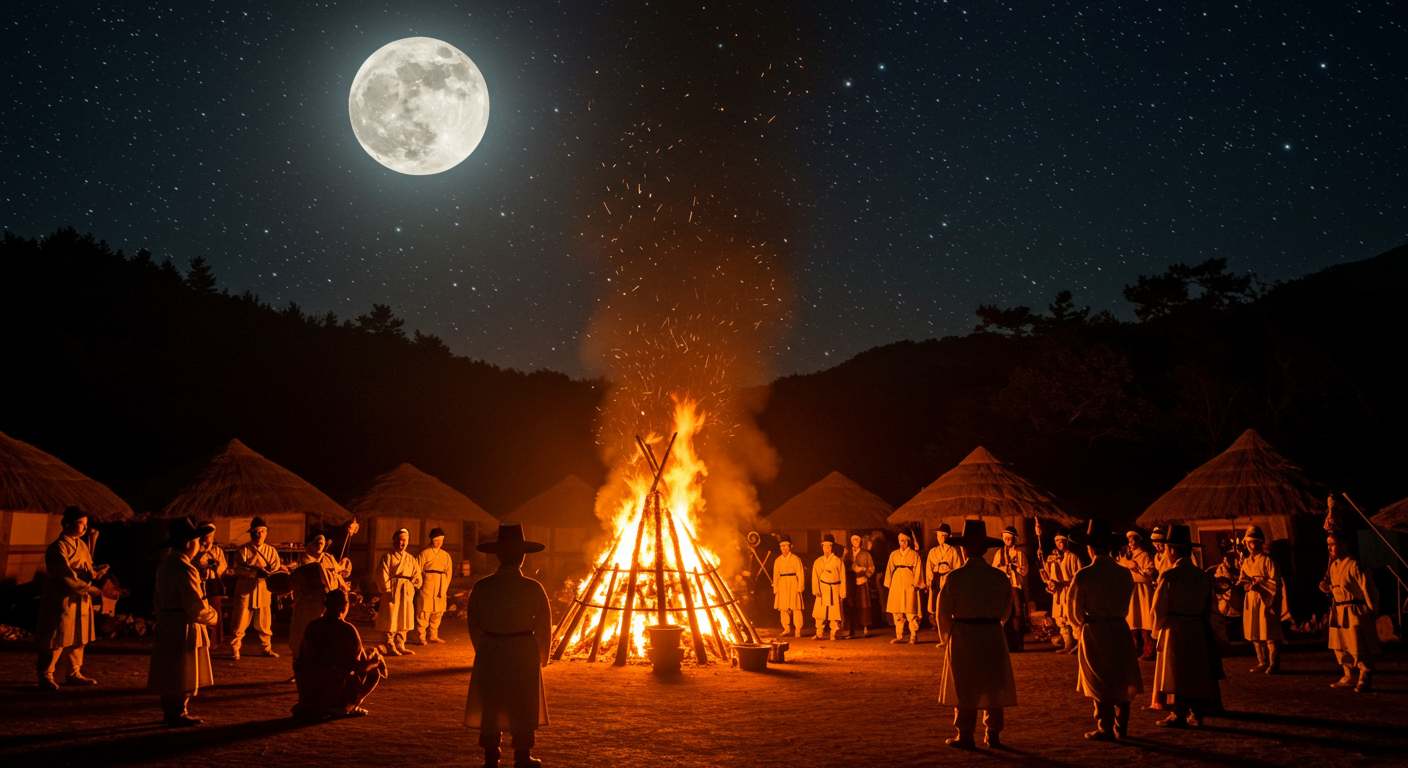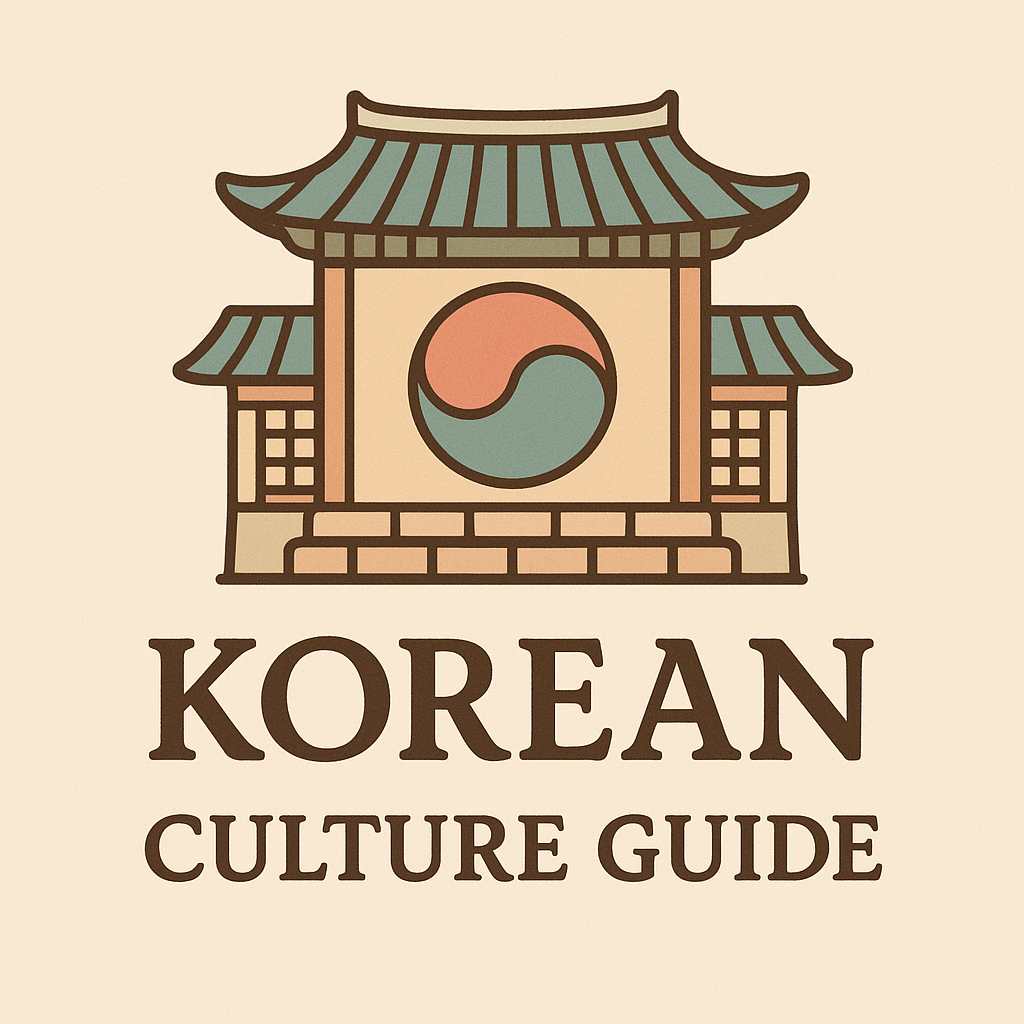-
Why Koreans Greeted the First Full Moon with Fire: The Ancient Ritual of Jeongwol Daeboreum
2025. 5. 23.
contents
A Night When the Sky Glows with Tradition
In Korea, the first full moon of the lunar new year isn’t just a celestial event—it’s a celebration of light, luck, and collective energy. Known as Jeongwol Daeboreum (정월 대보름), this festival is one of Korea’s oldest and most visually striking traditions. Among its many customs, none are more dramatic—or symbolic—than the lighting of great fires, known as daljip taeugi (달집태우기).
But why fire? And why on the first full moon? This blog dives deep into the cultural, spiritual, and agricultural roots of this tradition, uncovering why fire played such a pivotal role in ushering in good fortune, warding off evil, and bringing communities together under the light of the moon.

Fire as a Purifier: Burning Away the Old
In traditional Korean belief systems, fire held strong cleansing power. As the first full moon of the new year rose, Koreans would build massive wooden structures called daljip (moon houses) using pine branches, straw, and bamboo. As the moon appeared in the night sky, the daljip would be set ablaze, its flames reaching high into the air.
This act wasn’t just for spectacle—it was symbolic. The fire was believed to purify the land, chase away evil spirits, and burn off any lingering misfortunes from the previous year. Communities believed that watching the fire rise would carry their troubles away with the smoke, allowing for a fresh start.
Much like how people today talk about "letting go" of negativity for the new year, daljip taeugi was a literal enactment of that wish—one that lit up villages with hope and light.
Fire also served as a physical representation of transition. In a time when seasons dictated daily life, a roaring bonfire under the cold winter sky marked not only the passage of time but a collective turning of the page. As sparks soared, so too did the hopes of a new beginning.
Moonlight, Firelight, and Ancient Agriculture
Jeongwol Daeboreum is deeply tied to Korea’s agrarian roots. The first full moon marked an important moment in the lunar calendar, signaling the start of the new agricultural season. The rituals performed during this time weren’t just spiritual—they were practical.
Farmers believed that the brightness of the moon on this night could predict the year’s harvest. A clear, glowing moon meant a good farming year ahead. The flames of daljip, then, were part of prayers for fertile fields, good weather, and abundant crops.
In fact, villagers would often shout their wishes toward the moon as the fire roared: “Let there be no pests! Let there be rain at the right time! Let the rice grow tall!” This wasn’t just superstition—it was a form of communal hope, echoing through valleys and mountains.
The fire and moon formed a dual symbol of earthly and cosmic blessing—light from the heavens above and warmth from the earth below, blessing those who toiled the soil in harmony with nature’s rhythm.
Community, Celebration, and the Power of Togetherness
One of the most overlooked but powerful aspects of daljip taeugi is how it brought people together. In the cold of early spring, entire villages would gather to construct the daljip—sharing food, laughter, and stories as they worked.
Children would chase each other with traditional fire torches, adults would sip warm makgeolli (rice wine), and elders would exchange tales of moons past. As the fire lit the sky, people danced, sang, and feasted.
This communal bonding was just as important as the ritual itself. In an era before modern technology, festivals like Jeongwol Daeboreum provided one of the few moments in the year when social lines blurred and collective joy flourished.
It wasn’t just about spiritual cleansing or predicting harvests—it was about human connection. Everyone had a role, from elders telling stories to youth tending the flames. The fire didn't just burn wood; it ignited community spirit.
Superstitions and Lunar Magic
Fire wasn’t the only magical element associated with Jeongwol Daeboreum. Throughout history, Koreans practiced numerous superstitions on this day—all rooted in lunar beliefs and folk wisdom.
- Biting into nuts: On the morning of the first full moon, people cracked walnuts and chestnuts with their teeth. This was believed to prevent boils and ensure good dental health.
- Boiling ogokbap (오곡밥): A five-grain rice dish symbolizing abundance was prepared and shared with neighbors. It was a way to wish everyone prosperity.
- Watching the moon first: It was said that the person who spotted the moon before anyone else would have the most luck that year.
- Walking bridges at night: In some regions, crossing bridges under the moonlight was believed to bring good health and fortune.
Lighting a fire was just one part of a larger ritual tapestry—a day filled with symbolism, omens, and gestures aimed at aligning human life with the cycles of nature. The moon wasn’t simply watched—it was spoken to, trusted, and celebrated.
Jeongwol Daeboreum Today: A Flickering Flame in Modern Times
While Korea has modernized at a rapid pace, Jeongwol Daeboreum and daljip taeugi are still celebrated in various regions—especially in rural areas. Cities like Busan, Ulsan, and Gyeongju host large-scale festivals complete with traditional games, fire shows, and cultural performances.
Even in Seoul, citizens gather in parks or palace grounds to reenact the old customs, often accompanied by educational programs and performances. Fire safety regulations may have tamed the flames a bit, but the spirit of the festival continues to burn bright.
For Korean families living abroad, some have found creative ways to honor the occasion—lighting small candles, cooking ogokbap, or simply going out to watch the moon together and reflect.
In a world of screens and speed, these fire rituals remind Koreans—and curious travelers—that sometimes the most meaningful traditions are those that bring people together under a shared sky.
Lighting the Way to Hope
There’s something primal, beautiful, and enduring about gathering around a fire under a full moon. In Korea, Jeongwol Daeboreum is more than just a festival. It’s a prayer, a party, a purification—all rolled into one glowing ritual.
To greet the first full moon with fire is to say: “We are ready. Let the new year begin. Let it be bright.”
Whether you’re in a mountain village or a high-rise apartment, the next time you see that first full moon, maybe light a small candle—or just look up and remember that for generations, people did the same.
They wished. They burned. And they believed.
'culture' 카테고리의 다른 글
Why Koreans Ate Red Bean Porridge on Winter Solstice: The Story Behind Patjuk (0) 2025.05.27 Why Koreans Bowed Instead of Hugged: The Language of Respect (0) 2025.05.26 The Sound of the Gayageum: Why Korean Music Cherished Silence (0) 2025.05.25 How Traditional Korean Pillows Were Designed to Shape Dreams (0) 2025.05.24 Why Koreans Shared Dream Stories Over Breakfast: Myth, Meaning, and Morning Rituals (0) 2025.05.22 What Bamboo Means in Korean Poetry and Confucian Ideals (0) 2025.05.21 Why the Number Four Is Feared in Korea: Death and Language (0) 2025.05.20 The Ritual of First Snow: Why Koreans Made a Wish (0) 2025.05.20
K_Culture Guide
Korea Vibes Blog shares real stories, cultural insights, and travel tips from Korea. Discover what makes Korean life so unique.
